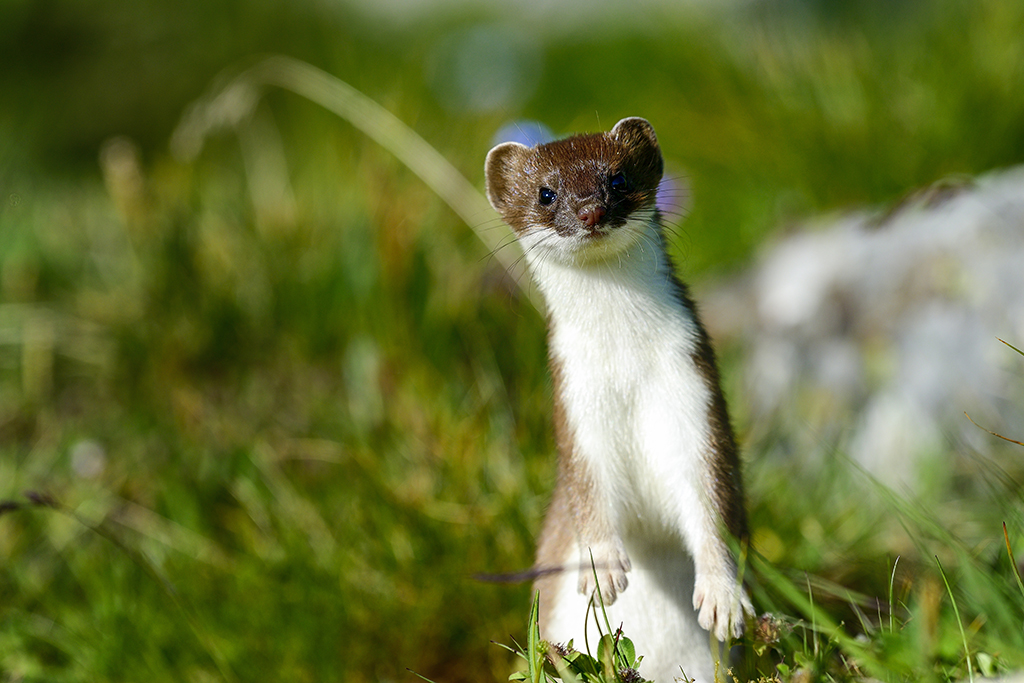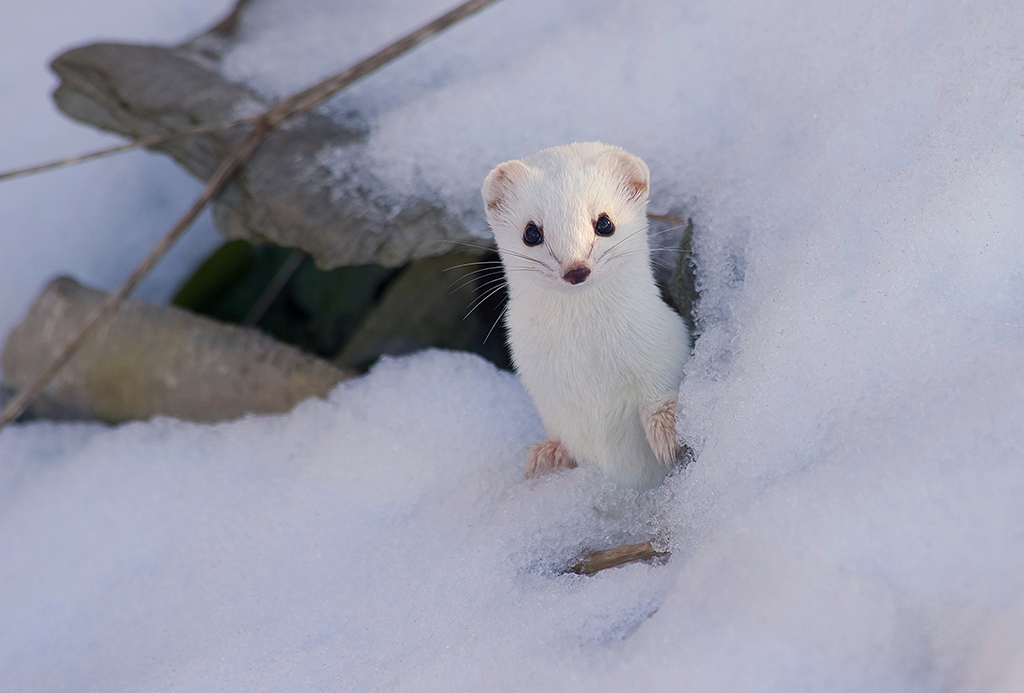
Going underground with Scotland’s stoats and weasels
With their fearsome reputation as bloodthirsty hunters, weasels and stoats demand respect from gamekeepers and farmers alike.
For most of us, stoats and weasels are only occasionally glimpsed rushing across a road and more usually viewed as casualties lying on the verge.
These quite extraordinarily lithe mustelids seem elastic, with sinewy little bodies perfectly suited for entering a variety of tight places, where their efficient silent underground movement keeps them well fed as they work their way through rabbit burrows, rat and vole tunnels, mouse holes and molehills.
They have a reputation for being able to get through the eye of a needle – and when they do, there will be carnage. Hens are not safe; and stoats frequently take eggs and chicks.
In 1863, the sportsman-naturalist Charles St John wrote: ‘The bloodthirstiness of all the weasel tribe is perfectly wonderful.’ These tiny sanguinivorous beasts, feisty little fiends, are among the most fascinating and awe-inspiring of all British mammals.
I have the greatest admiration for them, but few keepers would agree. Arable farmers often take a different view because of their ability to rid a yard of rats and mice, and love to see a stoat or weasel efficiently working its way through a rabbit colony.
We trap vast numbers of stoats and weasels in Fenn traps each year because of the threat they pose to game birds, poultry and songbirds.
Yet it is ironic that they are our greatest ally in the constant war against one of the most frequently moaned-about pests introduced to the country; even a good terrier is no match for a stoat when it comes to ratting skills.
I have watched one at work under a hayrick, seen the terrified rats fleeing in a panic, and the short work a stoat makes of despatch with an efficient bite to the skull as it moves like quicksilver onto the next. It’s impressive work.

Stoats have the power to mesmerise their prey and can hypnotise young rabbits
There is often confusion between stoats and weasels. While size is the most obvious difference, it is only the larger stoat that changes colour during winter in some areas of the British Isles, becoming pure white but retaining its distinctive black tail tip.
Confusingly, in Ireland, stoats are frequently referred to as weasels. In 1895 scientists found an intermediate form and called it the Irish stoat. It appeared to be similar to the ones found on Islay and Jura (where there are no weasels), was smaller and had irregular belly markings. It did not change colour in winter and like them retained its ginger coat throughout the year.
During the feudal era this winter pelage – known as ermine – was highly prized and was used to adorn ceremonial robes as far back at 1138. At that time only the royal family was allowed to wear ermine as trimmings, though later on other members of the nobility used it as well. Today a substitute is still used for members of the House of Lords, and for garments at coronations and other state occasions.
My grandmother used to describe someone in a temper with the wonderfully evocative expression ‘cross as a bag of weasels’. I have witnessed how apt this was. I was standing in the driveway at home chatting to a friend when a tiny movement in the long grass caught my eye.
I found a tiny wobbling weasel kit, calling plaintively. I stupidly bent to pick it up and then spied a second. I was about to pick that one up too when an irate hissing female weasel flew at me from beneath the grasses. I dropped the kit in a hurry and jumped back, narrowly escaping a severe bite. She was livid. She quickly picked up both young in her mouth and carried them off in a flash.
You have to admire such behaviour. Stoats and weasels are incredibly brave in defending their young and have such strong mothering instincts that they would stand up to an elephant in order to protect them. When disturbed, they will move young to a safer den. While weasels may rear two litters in a year, unlike stoats, they do not have the same complex system of delayed implantation but have a longer gestation period of about 36 days.

In winter, stoats’ coats turn white
Stoats have extraordinary sex lives as I discovered first hand while working in a wildlife hospital. Until that time I had wondered why particularly promiscuous gentlemen were referred to as ‘a bit of a stoat’ but soon found out, much to my amusement.
A minute stoat kit with eyes still closed had been brought to be hand-reared. She became far too tame and could not be released. However, many months later, I heard she had produced a litter of her own, having never been with any other stoats during her time in captivity. It seemed astonishing – merely another of this magical mustelid’s mysteries.
When entering the nest to mate with the female, male stoats also fertilise the helpless young when they are about three weeks old. Due to delayed implantation, the ensuing offspring won’t be born for many months.
Fertilised eggs remain dormant as ‘blastocysts’ – a tiny pinhead surrounded by fluid – and are not attached to the uterus for about nine months. Gestation is just under a month and up to 13 young may be born. Stoats have the power to mesmerise and frequently do just that, luring their large prey in to have a closer look. They often carry out what has been referred to as a ‘death dance’, hypnotising foolish young rabbits in particular.
They are mesmerising to us humans as well: while taking my son to school one morning years ago when he was eight, we happened on a family of stoats playing on the roadside. We stopped the car and sat entranced. For more than 20 minutes we witnessed the most dramatic mammal ballet either of us had ever seen.
Twisting and turning in mid-air, leaping and writhing in simulated hunting play, they thrilled us with their fabulous performance. When my son arrived very, very late for school, he said to his teacher: ‘I’m sorry I am so late, but Mummy says we have just had far better education than anything I could ever have received in here.’ I still stand by that statement.
TAGS

